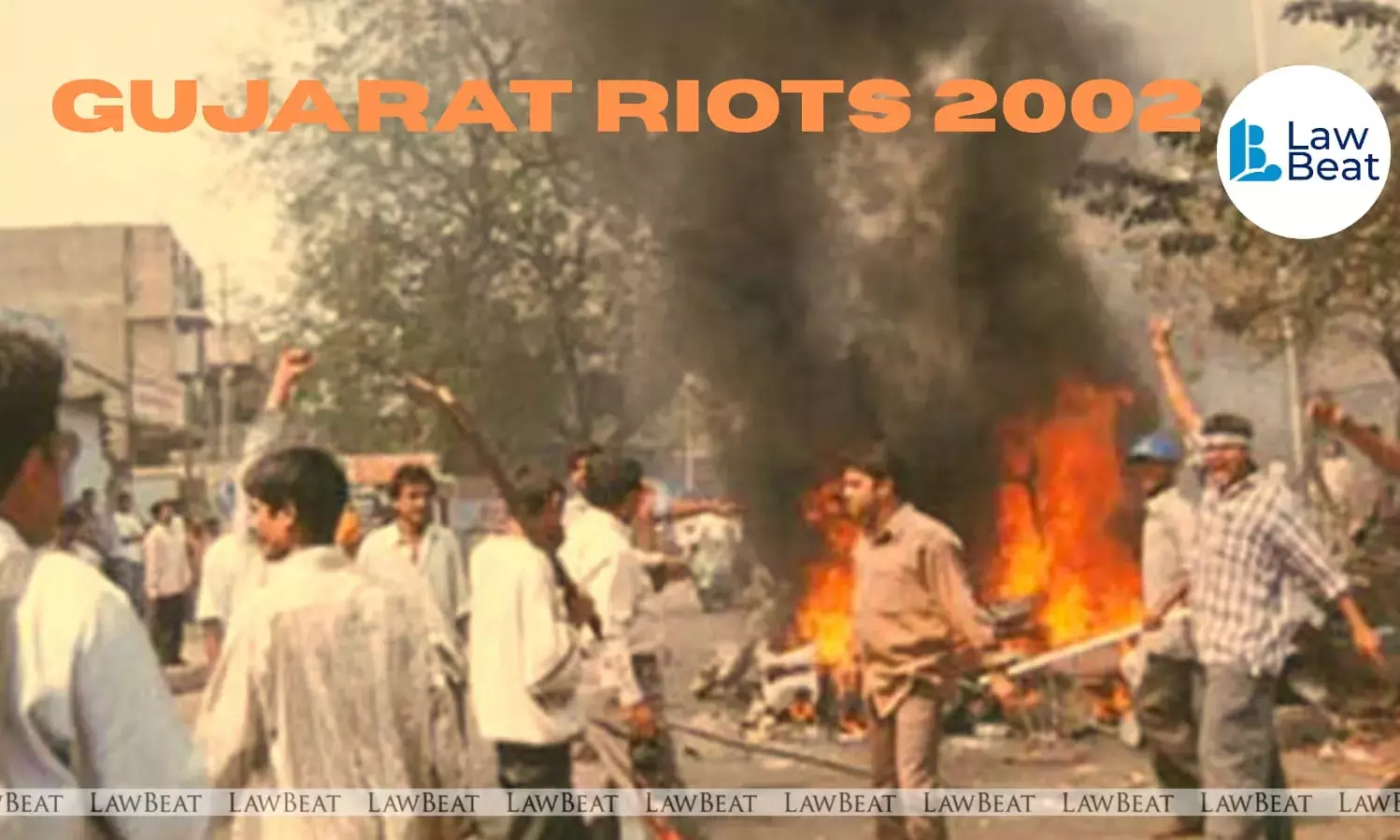"Lack of Proof": Gujarat HC Acquits Three in 2002 Post-Godhra Riots Case

The Gujarat High Court on July 28, 2025, acquitted three men convicted for rioting and arson during the 2002 post-Godhra violence, observing that the trial court had based its verdict on uncorroborated and shaky testimony without credible evidence to prove their guilt beyond reasonable doubt.
The bench of Justice Gita Gopi tabled the verdict in the appeals filed by Sachinbhai Hasmukhbhai Patel and two others, overturning the 2006 convictions handed down by the Fast Track Court in Anand.
The accused had been sentenced to five years rigorous imprisonment under charges including unlawful assembly, rioting, and mischief by fire under Sections 143, 147, and 436 read with 149 of the IPC.
The case pertained to incidents of arson that broke out in Anand on March 1, 2002, amid the statewide Bharat Bandh following the burning of the Sabarmati Express at Godhra. Several shops, mostly owned by Muslims, were torched in Anand’s Lotia Bagod area.
However, the high court found the prosecution’s case riddled with inconsistencies. The sole reliance was placed on the testimony of PW3, with only faint support from PW2 and PW14, both of whom were closely related and not eyewitnesses to the act, the court noted.
Court also raised serious concerns about the police investigation. There was no Test Identification Parade (TIP) to verify the accused’s involvement, and no independent witness was produced. Moreover, the FIR did not name any of the accused, and the statements of prosecution witnesses were recorded weeks after the incident, raising the possibility of false implication, the court observed.
Court said, "In cases where accused is a stranger to the witness and there has been no TIP, the trial Court should be very cautious while accepting the dock identification by such a witness. In absence of TIP, the dock identification of accused will always remain doubtful".
Interestingly, even the complainant’s written statement (Exhibit 35), allegedly naming the accused, was undated, not officially received by the police, and lacked endorsement or any corroborative evidence. "Exhibit 35 cannot be accepted in evidence unless the recipient of the document admits of having received it, otherwise in every trial, witnesses would produce such statement to improvise their case and Court would be relying on it for their conclusion, which is not permissible in law," court said.
One of the most critical observations made by the court was the improper use of Section 149 IPC (unlawful assembly), which mandates the presence and common object of at least five persons. With only four out of nine accused convicted and the rest acquitted, the application of Section 149 stood on shaky legal ground. The court relied on Supreme Court precedents to assert that such a conviction could not be sustained.
"The learned Trial Court Judge had erred in the appreciation of the evidence. Conviction is not based on reliable and corroborative evidence. The identification of the accused have not been proved during the trial. The present appellants whether were the member of the unlawful assembly was not proved, and that they had common object of creating arson had not been proved, and any act of the appellants accused in prosecution of the common object, of setting things on fire and damaging the private and public property had not been proved during the trial", the court held.
The appeals were allowed, and all convictions and sentences against the appellants were quashed.
Case Title: Sachinbhai Hasmukhbhai Patel & Anr. vs. State of Gujarat
Judgment Date: July 28, 2025
Bench: Justice Gita Gopi
